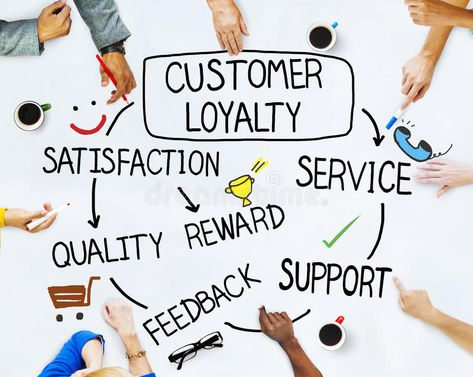In today’s competitive business landscape, building and maintaining customer loyalty is more important than ever. Customer loyalty goes beyond repeat purchases; it involves a deep and lasting connection between the consumer and the brand. It’s about creating an emotional connection that can withstand market fluctuations and the constant lure of new options.
This customer loyalty journey has many dimensions and includes diverse strategies, from personalized experiences to exceptional customer service. In this post, we delve deeper into the art and science of customer loyalty and the challenges of building lasting connections with customers.
Understanding Needs of Customer
At the heart of building customer loyalty is a fundamental understanding of customer needs. It’s not just about providing a product or service; it’s about addressing customers’ basic desires, preferences, and problems. Successful businesses invest time and resources to understand their target audience, conduct in-depth market research, and use customer feedback to tailor their offerings.
This personalized approach not only ensures that the product or service meets expectations, but also signals to customers that their individual needs are valued, thereby promoting a feeling of importance and satisfaction.
Strategies for Building Customer Loyalty
Trust Through Transparency
Trust is the foundation of customer loyalty. Establishing transparency in business practices creates a sense of trust and confidence. This involves clear communication about product details, pricing structures and any policies that affect customers. When customers feel they can trust a brand’s transparency, it fosters a relationship of trust.
This confidence is often tested in trials or errors. How a business handles errors and communicates with customers in such cases can have a significant impact on loyalty. Open and honest communication, along with a genuine effort to resolve the issue, can turn a potentially negative experience into an opportunity to strengthen the relationship between customer and brand.
Personalized Experience
In the era of Big data and advanced analytics, personalization has become the cornerstone of customer loyalty strategies. Tailoring experiences based on personal preferences, purchase history, and behavior will improve customer engagement.
Whether it’s personalized marketing messages, personalized product recommendations, or exclusive offers, customers appreciate the extra effort to understand and meet their unique needs. This personal touch makes customers feel seen and valued, strengthening their connection with the brand.
Excellent Customer Service
Exceptional customer service is a powerful catalyst for loyalty. When customers have problems or questions, quick, helpful support can change their perception of the brand. Investing in a well-trained and empathetic customer service team is an investment in loyalty.
The ease with which customers can ask for help, the speed with which problems are resolved, and the overall experience of working with brand representatives all contribute to shaping the customer’s opinion. Continuously providing exceptional service not only addresses immediate concerns but also creates a positive brand narrative that contributes to long-term loyalty.
Loyalty Program
Implementing loyalty programs is a tangible way to express gratitude to customers for their continued support. Whether it’s a points system, exclusive discounts, or tiered memberships, these programs encourage customer loyalty. They also create a sense of exclusivity, making customers feel like valued members of a community.
The psychology behind loyalty programs taps into the human desire to be recognized and appreciated. When customers see tangible benefits from their loyalty, it strengthens their bond with the brand and makes them more likely to choose that brand over others.
Challenges in Building Customer Loyalty
Evolving Expectations: Adapting to ever-changing customer expectations is an ongoing challenge, requiring businesses to stay ahead of trends and understand changing needs.
Trust and Transparency: Building and maintaining transparency and trust in an age where authenticity is paramount can be challenging, requiring consistent communication and ethical business practices.
Impact of Social Media: The influence of social media amplifies the impact of customer opinions, requiring careful reputation management to effectively manage posts online reviews.
Economic Fluctuations: External factors, such as economic changes, can impact consumer behavior and loyalty, forcing businesses to deal with uncertainties and adjust their strategy accordingly.
Disruption in Industry: Rapid changes or disruptions in the industry can pose challenges to customer retention, requiring flexibility and innovation to stay relevant. – Service
Consistency: Providing consistent, high-quality service is critical, and failure to do so can erode customer trust, while highlighting the need for strict service standards and continuous improvement.
Competition: Fierce competition in most markets makes building customer loyalty difficult and forces companies to differentiate, making it difficult to stand out and create a unique value proposition for customers.
Conclusion
Customer retention is a dynamic process that intertwines many different elements of business strategy, and customer experience. From understanding customer needs to promoting transparency to providing personalized experiences and good service, every interaction shapes customer perception.
Loyalty is not simply about transactional results but also about an emotional connection that goes beyond the point of sale. In a market marked by growing choice, businesses that prioritize customer loyalty and retention are positioning themselves not just for short-term success but for long-term relationships , standing firm against the test of time and market fluctuations.
